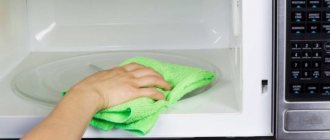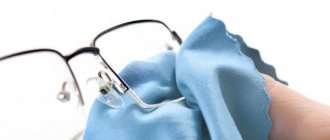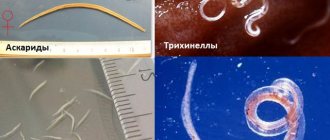In the 1940s, American engineer Percy Spencer, then working for Raytheon, was testing a magnetron, a device that generates microwaves, when he noticed that the candy bar in his pocket had melted.
This accidental discovery led him to develop the device that we all know today as the microwave oven. Over the years, this device has become an indispensable assistant in the household.
Be that as it may, today there are still many questions regarding the safety of microwave ovens. Is their radiation safe for humans? Does this radiation destroy the nutrients in our food? And what about the famous study on plants fed on microwaved water (more on that later)?
To answer some of the most popular (and pressing) questions surrounding microwaves, we asked three health professionals for their opinions: Natalie Olsen , a registered dietitian and exercise instructor, Natalie Butler , a registered dietitian, and Dr. Karen Gill , a pediatrician. And this is what they told us.
What happens to food when it is cooked in the microwave?
Natalie Olsen: Microwaves are non-ionizing electromagnetic radiation and are used to quickly heat food. They cause molecules to vibrate and accumulate thermal energy (heat).
According to the US Food and Drug Administration (FDA), this type of radiation does not have enough energy to knock electrons out of atoms. This is in contrast to ionizing radiation, which can change atoms and molecules and cause cell damage.
Natalie Butler: Microwave radiation, or microwaves, is generated by an electron tube called a magnetron. These waves are absorbed by the water molecules in the food, causing them to move rapidly, or vibrate, causing the food to heat up.
Karen Gill: Microwave ovens use electromagnetic waves of specific wavelengths and frequencies to heat and cook food. These waves affect certain substances, using their energy to produce heat. First of all, the water contained in the food is heated.
Evidence that the approach is harmful
To understand why many experts believe that it is impossible to heat food and cook semi-finished products in the microwave, you do not have to be a physicist or engineer. You can simply familiarize yourself with the results of numerous studies, the interpretations of which will be clear to everyone:
- Microwaves change the polarity of each product molecule, which is accompanied by its deformation. This causes a change in the structure of amino acids, leading to the formation of their new toxic forms, which is undoubtedly harmful to the body.
- Researchers have repeatedly conducted experiments using volunteers. One group of people could only eat fresh, pasteurized or naturally defrosted foods. Another group ate exactly the same food, but processed in the microwave. After some time, all participants in the experiment donated blood. The tests showed disappointing results - the blood quality of the second group noticeably deteriorated. There was an increase in cholesterol levels, a decrease in hemoglobin, and an increase in the number of leukocytes.
- Having carefully studied food processed in the microwave to one degree or another, scientists have discovered completely new formations and compounds that are uncharacteristic of specific products, which can be considered foreign, and therefore harmful.
As a result of research conducted by Russian scientists relatively recently, the following negative aspects were established:
- The nutritional value of products after short-term or long-term processing is reduced by approximately half.
- Even short-term exposure to electromagnetic waves on raw, cooked or defrosted fruits and vegetables leads to the formation of carcinogens in them.
- Microwave processing of milk, grains and meat also does not reach the products without leaving a trace. In addition to changes in their structure, various types of carcinogens are formed.
We recommend: What cannot be heated in the microwave: list of prohibited dishes and foods
If you evaluate all of the above facts, it becomes clear why many are against the use of microwave ovens. On the other hand, experts argue that the effect of harmful factors can be, if not eliminated, then at least significantly reduced.
Microwave dries food, but nothing more
Natalie Butler: When heating in a microwave oven, the water content of food decreases as the food heats up quickly. Therefore, food may take on an undesirable texture. Proteins can become tough, crunchy textures soften, and moist foods become dry.
Additionally, vitamin C, which is a sensitive water-soluble vitamin, is more susceptible to destruction in a microwave oven than in a convection oven. Still, while microwave cooking may reduce the antioxidant content (vitamin and phytonutrient concentrations) in some plants, those same plants retain other nutrients better than other cooking methods, such as baking or frying.
For example, red cabbage is better cooked in the microwave than steamed, as it preserves anthocyanins better, although vitamin C is destroyed more quickly. Cauliflower retains quercetin well, but retains another flavonoid, kaempferol, less well.
Microwaving minced garlic for 60 seconds significantly reduces the content of allicin, a powerful anti-cancer compound. However, it has been found that if garlic is left for 10 minutes after chopping, most of the allicin will be retained during cooking.
Microwave cooking can also reduce bacteria in food, so it can be used as a good method for pasteurizing and decontaminating food.
What is the problem
When heating some foods in the microwave, it creates an excellent environment for the formation of pathogenic microorganisms. Reheating, for example, sushi and rolls in a microwave oven causes disturbances in the functioning of the digestive system, including severe food poisoning. Seafood is the most dangerous.
To preserve the beneficial properties and good taste of many products, experts recommend heating them in a water bath. Yes, it will take a little longer to warm up the food - at least 10 minutes if you place jars of baby food in a bowl of hot water. But this way you can be sure of maintaining the high-quality organoleptic properties of baby food.
Vegetables are best cooked in the microwave.
Karen Gill: Any method of cooking results in the loss of some nutrients due to heat. When cooking in the microwave, you don't have to use a lot of water (like boiling), and the cooking time is significantly reduced, so the food retains more nutrients.
Vegetables are especially suitable for microwave cooking as they contain a lot of water, hence they cook quickly without adding water. It's like steaming, only faster.
Is it possible to reduce the negative impact of the device?
Even rare use of a microwave oven is harmful to the body. True, there are several rules, following which you can reduce the negative impact to a minimum:
- We use only special or glass dishes, but not metal.
- You cannot heat food in a microwave, which is a liquid in an airtight shell. This includes eggs in shells, sausages in film, soups in bags and other similar dishes and devices.
- It is best to completely avoid processed foods. The only exceptions are home-cooked dishes with a clear and safe composition without the addition of preservatives, dyes, or flavors (including various sauces).
- Plastic bags and plastic are also unacceptable when starting the microwave. Not only can these components react negatively to exposure, but under the influence of high temperatures they also react with food. As a result, food is saturated with toxic compounds harmful to the human body.
- Despite the fact that the principle of operation of a microwave oven can be easily explained even to children, children should not be allowed near it. Still, the absence of harmful effects of products on the human body has not yet been proven.
It is mandatory to check its tightness immediately after purchasing the device and from time to time during its use. This can be done using a mobile phone. Place the device inside the device and close the door. We call it from another phone and check the signal quality (no need to go to another room for this). If the signal does not pass through, the seal of the furnace is at a high level. Otherwise, the product is damaged or simply of poor quality. Even being near it poses a danger to humans.
Today, more and more people are inclined to believe that even the obvious convenience of microwave ovens does not justify their possible negative impact. Therefore, housewives are returning en masse to using more troublesome, but familiar household items.
What are the possible negative effects of eating microwaved food?
Natalie Olsen: Scientific American offered an explanation from Dr. Anuradha Prakash, assistant professor of food and nutrition at Chapman University, who said there is not enough evidence that microwave ovens have a negative impact on human health.
He stated that "to our knowledge, microwaves do not have any non-thermal effects on food." In other words, other than changing the temperature of the food, there is little or no impact.
Natalie Butler: Plastic food containers when heated in the microwave can leach toxic chemicals into food, so should not be used - use glass instead. Low-quality, faulty, or old microwave ovens can also leak radiation, so be sure to stay at least six inches away from the microwave while cooking.
Karen Gill: There are no short-term or long-term effects of eating microwaved food. The biggest risk is that drinks and foods with high water content may heat unevenly or to very high temperatures.
Remember to stir foods and drinks before consuming them. Do not use utensils that are not specifically designed for microwave use.
Myth 5. People with a pacemaker should not have a microwave oven at home
Image: Marcos Ramírez / Unsplash
This is not true. According to Pacemaker implantation/NHS and the British Heart Foundation, staying 15 centimeters away from the microwave is enough to avoid electromagnetic interference that could damage your pacemaker.
That is, if a person with heart disease does not hug a working stove, nothing bad will happen to him.
But you need to be careful with induction cookers. The safe distance for them is Pacemaker implantation / NHS of at least 60 centimeters, so you will have to cook at arm's length.
Experts
Natalie Olsen
She is a registered dietitian and exercise instructor specializing in the treatment and prevention of disease. Her technique is based on the idea that the mind and body can be brought into balance by eating natural and organic foods. She has two Bachelor of Science degrees, in Health and Wellness Support and in Nutritional Science. She is an ACSM certified exercise instructor. Natalie works for Apple as a corporate nutritionist and provides consultations at an integrated health and wellness center called Alive + Well, and also runs her own business in Austin, Texas. Natalie has been recognized by Austin Fit Magazine as one of the "Top Nutritionists in Austin." She enjoys the outdoors, warm weather, trying new recipes and restaurants, and traveling.
Natalie Butler
The Registered Dietitian Nutritionist, Registered Dietitian, is a foodie at heart and is very passionate about what she does. She helps people discover the power of nutritious, real food, with an emphasis on a plant-rich diet. She graduated from the State University. Stephen F. Austin in East Texas and specializes in the prevention and treatment of chronic disease, as well as elimination diets and environmental medicine. She is a corporate nutritionist for Apple, Inc. in Austin, Texas, and also runs her own private practice, Nutritionbynatalie.com. She feels happiest when she spends time in her kitchen or garden and in nature, and enjoys teaching her two children to cook, garden, be active and enjoy a healthy life.
Karen Gill
Pediatrician. Graduated from the University of Southern California. She specializes in breastfeeding, nutrition, obesity prevention, and sleep and behavioral problems in children. She worked as the head of the department of pediatrics at Woodland Memorial Hospital. She was a physician supervisor at the University of California, Davis, teaching students in the physician assistant program. She currently works at the Mission Neighborhood Health Center, serving Latino residents of San Francisco's Mission District.
Source: https://www.healthline.com
Illustrations: Yulia Prososova
Myth 9. The microwave sterilizes food.
Image: Lissete Laverde / Unsplash
This is not entirely true. Microwave radiation is not an x-ray; it does not have a sterilizing effect and can only heat things. But if you bring food in the oven to a temperature above 100 ° C, most of the microbes will die.
True, some microorganisms can survive in the form of spores during heat treatment. So experts from the US Centers for Disease Control and Prevention recommend Disinfection & Sterilization Guidelines / CDC to play it safe and sterilize objects at a temperature of 150 °C for 150 minutes.
It’s just that household microwave ovens are not designed for such operating modes.
Research conducted by the US Centers for Disease Control and Prevention shows Disinfection & Sterilization Guidelines / CDC that it is still possible to use a microwave for sterilization, although with special precautions and in the presence of large amounts of water.
But still: doctors are not recommended to process medical devices in microwave ovens, since it will be difficult to ensure uniform heating. Good old boiling is better and more practical.
In general, use the microwave for its intended purpose, and not to fight germs. And be careful if you try to boil water in it. The liquid may pass the boiling point unnoticed without bubbles, and when you move the pan carelessly, it will splash out and cause burns.











